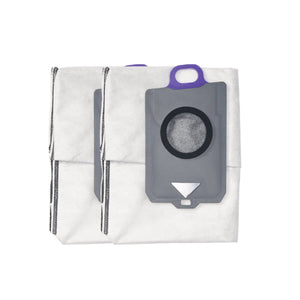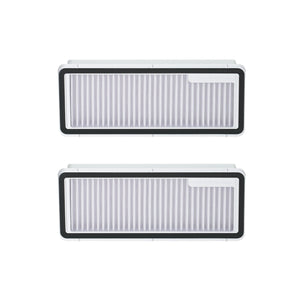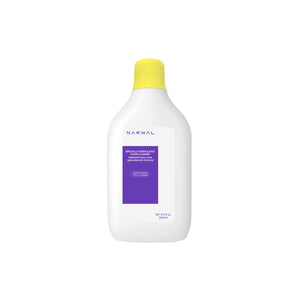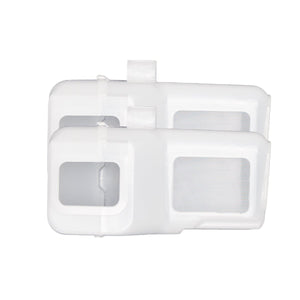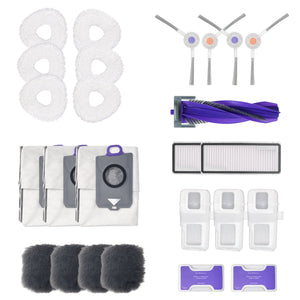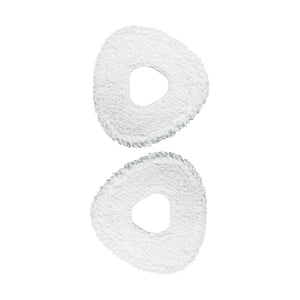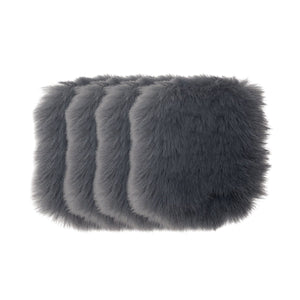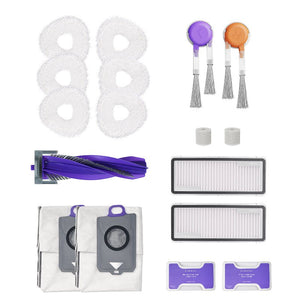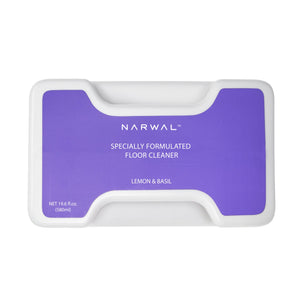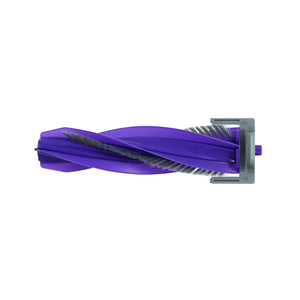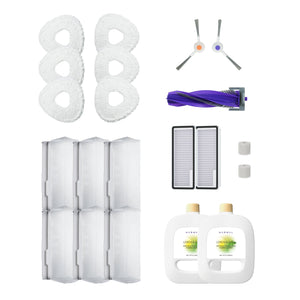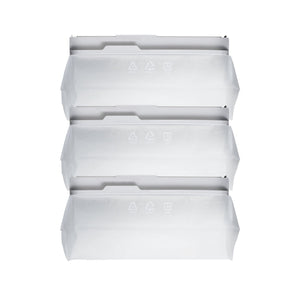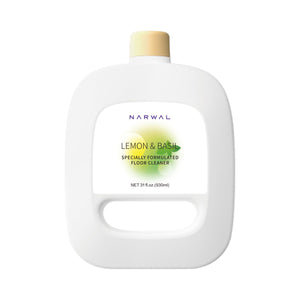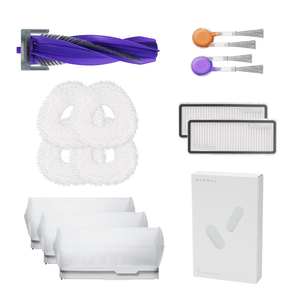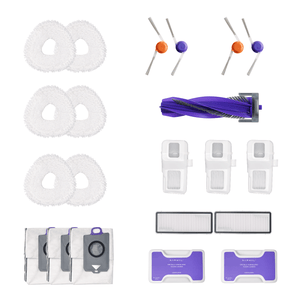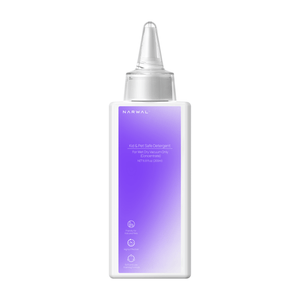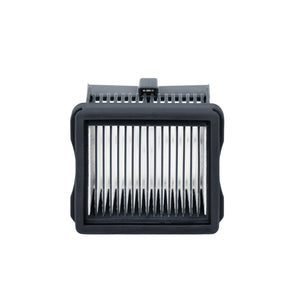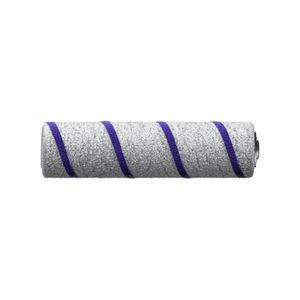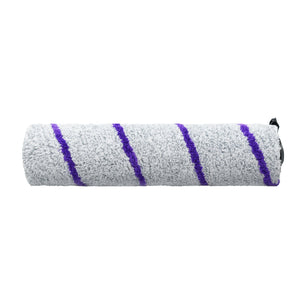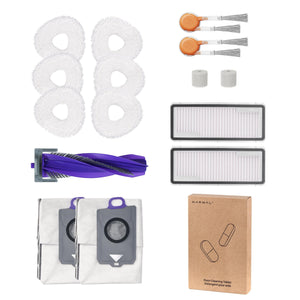Cleaning concrete floors can be a challenge. Dust, spills, and stains are common, and using the wrong vacuum can make things worse. The right vacuum makes a big difference in keeping your concrete floors spotless and well-maintained.
In this guide, we’ll cover everything you need to know. We’ll start by helping you choose the best vacuum for concrete floors. Then, we’ll compare different vacuum types and how they work on various concrete surfaces. We’ll also address common cleaning issues, like vacuuming concrete dust and fixing performance problems. Finally, we’ll look at features for specific needs like pet hair, wet floors, and tough stains.
By the end, you'll have the knowledge to pick the right vacuum and keep your floors clean with ease.

Our Top Recommendation: Narwal S20 Pro – The Best Vacuum for Concrete Floors
If you’re looking for an efficient and hassle-free way to clean your concrete floors, the Narwal S20 Pro is the ideal choice. This cordless vacuum mop combines powerful suction, wet-dry functionality, and self-cleaning technology, ensuring your floors are spotless and fresh with minimal effort.
Powerful Suction and Wet-Dry Functionality for Concrete Floors
The Narwal S20 Pro excels in handling the unique demands of cleaning concrete floors. With an impressive 20,000Pa suction, it effectively picks up both fine dust and larger debris typically found on concrete surfaces. The powerful suction, combined with wet-dry functionality, ensures that the vacuum mop can handle both dry dust and liquid messes, making it a versatile solution for homes with children, pets, or high-traffic areas.
Self-Cleaning and Drying for Ultimate Convenience
The Narwal S20 Pro comes with an advanced self-cleaning and drying system that ensures the mop head is always fresh and ready. With just a click, the mop head is not only cleaned but also dried to 149°F, preventing bacteria growth and unpleasant odors. This feature is perfect for families who need a convenient, hygienic solution for their busy households.
AI DirtSense™ for Enhanced Cleaning Efficiency
With the AI DirtSense™ technology, the Narwal S20 Pro automatically adjusts its suction power based on the level of dirt detected on the floor. This ensures that each area is cleaned optimally without wasting power, making it ideal for varying levels of dirt on your concrete floors. Whether it’s light dust or tough spills, the vacuum adjusts for maximum efficiency.
Wet-Dry Functionality for Versatility
The wet-dry functionality of the Narwal S20 Pro allows it to handle both dry debris and wet spills on your concrete floors. Whether it’s dust, dirt, or liquid messes, this vacuum mop has you covered. Its ability to handle both types of messes makes it an all-in-one cleaning solution for households with children, pets, or active kitchens. You won’t need a separate mop again.
Effortless Glide and Extended Reach
Designed for ease of use, the Narwal S20 Pro features a lightweight design and smooth glide, making it easy to clean under furniture or in tight spaces. The 180° flat reach feature allows you to clean areas that are otherwise difficult to reach, such as beneath couches and tables. The effortless gliding and extended reach simplify the cleaning process and ensure maximum coverage without hassle.
Quiet Operation and Long-Lasting Battery
For homes with children or anyone who prefers quieter appliances, the Narwal S20 Pro offers a whisper-quiet cleaning experience at just 43dB. This makes it ideal for cleaning at any time of day without disturbing the peace. Additionally, the vacuum offers up to 60 minutes of continuous runtime on a single charge, ensuring that you can clean even large areas of concrete floors without interruption.
[cta:narwal-s20-pro-vacuum-mop]
Key Features to Look for in a Vacuum for Concrete Floors
When choosing a vacuum for concrete floors, it’s important to focus on features that ensure both efficiency and effectiveness. Unlike carpeted floors, concrete collects fine dust, heavy debris, and even wet spills. To tackle these challenges, your vacuum should have strong suction, effective filtration, wet-dry capabilities, and maneuverability. Let’s take a closer look at why these features are crucial for concrete floor cleaning.
Powerful Suction
A vacuum’s suction power is crucial for effectively cleaning concrete floors. Concrete tends to trap fine dust and dirt, which can be difficult to remove with low-powered vacuums. Look for a vacuum with high suction power (measured in Pa, or Pascals), ideally above 20,000Pa. This ensures that even the smallest particles of dust and debris are efficiently picked up, leaving your floor spotless.
Filtration System
Concrete floors often harbor allergens and small particles, which can affect air quality. A high-quality filtration system is essential for trapping these particles and preventing them from being released back into the air. HEPA filters are the gold standard in vacuum filtration, as they capture 99.97% of particles as small as 0.3 microns. A vacuum equipped with a HEPA filter will not only clean your floors but also help improve indoor air quality, especially for households with asthma or allergies.
Wet-Dry Functionality
Concrete floors, particularly in kitchens, basements, or garages, are prone to both dry debris and wet spills. A vacuum with wet-dry functionality will allow you to clean up both. Wet-dry vacuums are especially useful in environments where liquid spills, such as water or food, are common. By choosing a wet-dry vacuum, you get a versatile cleaning tool that can handle all kinds of messes, making it an all-in-one solution for cleaning concrete floors.
Easy Maneuverability and Reach
Concrete floors, particularly in large areas or spaces with heavy furniture, can make cleaning difficult. A vacuum that is lightweight and easy to maneuver is essential for efficiently cleaning large concrete surfaces. Look for a vacuum with a swivel head or flexible nozzle, which allows you to easily glide around furniture and reach corners and edges. Some vacuums also feature a 180° flat reach or extended handle, which makes cleaning under furniture effortless and maximizes coverage.
Self-Cleaning and Maintenance Features
Maintenance is key to ensuring your vacuum’s longevity and performance. A vacuum with self-cleaning features can save you time and effort by preventing the buildup of dust and hair in the roller brush. Additionally, look for vacuums with easy-to-empty dust bins and those that have auto-solution dispensing for a smoother and hassle-free cleaning experience. Self-cleaning and low-maintenance models help ensure your vacuum remains in top shape, especially after heavy use on concrete floors.
Quiet Operation
Noise can be a major concern, especially if you need to clean at different times of the day or night. A quiet vacuum (operating at below 50dB) ensures that you can clean your concrete floors without disturbing your household. This is especially important for families with babies, pets, or those who prefer a quieter cleaning session.
Battery Life and Charging Time
For those choosing a cordless vacuum, battery life and charging time are essential considerations. A vacuum with long-lasting battery life (at least 60 minutes of runtime) allows for uninterrupted cleaning of large concrete floors. Ensure that the vacuum’s charging time is reasonable, ideally under 4 hours, so you don’t have to wait too long between uses.

Special Features for Niche Needs: Vacuuming Pet Hair, Wet Concrete Floors, and Stains
While most vacuums are designed for general cleaning, specific tasks like vacuuming pet hair, wet concrete floors, and tough stains require specialized features. Here’s what to look for to tackle these unique cleaning challenges:
Vacuuming Pet Hair: Essential Features for Pet Owners
Pet hair can be tricky to clean, especially on concrete floors where it can settle in cracks. To effectively tackle pet hair, choose a vacuum with these features:
-
High Suction Power: A vacuum with 20,000Pa suction or more is essential to lift pet hair from concrete surfaces.
-
Tangle-Free Brushes: Pet hair can get tangled in brushes, reducing cleaning efficiency. Look for vacuums with tangle-free brush rolls or pet hair attachments.
- Specialized Pet Tools: Pet hair nozzles or brushes can help lift hair from both floors and upholstery, ensuring a deeper clean.
Vacuuming Wet Concrete Floors: Essential for Damp Environments
For areas like garages or basements, wet concrete floors are common. Choose a vacuum that can handle both dry debris and wet spills:
-
Wet-Dry Capability: A vacuum with wet-dry functionality is essential for cleaning up both dust and liquid messes.
-
Waterproof Components: Make sure the vacuum has waterproof seals and water-resistant parts to avoid damage from wet messes.
- Quick-Drying Features: If wet areas persist, some vacuums offer quick-drying modes to help your floors dry faster.
Vacuuming Tough Stains: Cleaning Concrete Floors with Stubborn Messes
Concrete floors are prone to stains like oil spills or food stains. For tough messes, you need a vacuum with powerful stain-removal features:
-
High-Performance Suction and Scrubbing: Some vacuums offer scrubbing action alongside high suction, helping to remove stubborn stains while cleaning.
-
Steam Cleaning Feature: Vacuums with integrated steam cleaning can loosen tough stains, making them easier to remove.
- Specialized Stain Brushes: Stain-removal brushes designed for concrete floors are ideal for deep cleaning without damaging the surface.

Comparing Vacuum Types for Concrete Floors
Choosing the right vacuum for concrete floors is essential, as different types serve different cleaning needs. Here's a breakdown of the most common types of vacuums and how they fit various concrete surfaces.
Upright Vacuums: Ideal for General Use
Upright vacuums are great for general cleaning in homes with concrete floors. They offer strong suction, making them excellent for handling both fine dust and larger debris on rough concrete surfaces. They’re versatile and can clean other surfaces too, such as carpets.
Industrial Vacuums: Heavy-Duty for Large Spaces
Industrial vacuums are designed for commercial use and large spaces. They excel at cleaning tough messes in garages or factories, where heavy-duty suction is needed. Their larger bins and powerful motors make them perfect for large-scale cleaning tasks on rough, unsealed concrete floors.
Cordless vs. Corded Vacuums: What You Need to Know
When deciding between cordless and corded vacuums, consider your cleaning needs:
-
Cordless: Offers greater mobility but limited suction power and shorter battery life, making them ideal for lighter, everyday cleaning.
- Corded: Provides consistent, powerful suction for tougher jobs but is less flexible due to the need for a power outlet.

Do Robot Vacuums Work on Concrete Floors?
Yes, robot vacuums can work on concrete floors, but their effectiveness depends on the type of concrete surface. For polished concrete, robot vacuums are ideal for daily cleaning and dust removal. Models with adjustable suction and soft brushes can clean without damaging the floor’s smooth surface.
However, for rough, unsealed concrete (such as in garages or outdoor areas), robot vacuums might struggle with larger debris and uneven surfaces. They can still be effective for light dust and debris, but may not handle tough messes as well as traditional vacuums.
For better performance on rough concrete, consider robot vacuums like Narwal Freo Z10 or Narwal Freo Z Ultra, which offer strong suction and enhanced navigation capabilities, making them suitable for both dry debris and light mopping on tough concrete surfaces.
[cta:narwal-freo-z10-robot-vacuum-mop]
While robot vacuums are excellent for routine maintenance on smooth concrete floors, they may not be the best choice for heavier messes on rough or unsealed concrete. If you need a reliable solution for regular cleaning, consider a model like the Narwal Freo Z10 for polished concrete, or the Narwal Freo Z Ultra for unsealed surfaces.
[cta:narwal-freo-z-ultra-robot-vacuum-mop]
Troubleshooting Common Issues When Using a Vacuum on Concrete Floors
When using a vacuum on concrete floors, you might encounter issues such as loss of suction, the vacuum getting stuck on rough surfaces, or trouble with wet spills and excessive noise. These problems can make cleaning less efficient, but with the right solutions, you can keep your vacuum performing at its best. Below are the common issues and how to fix them.
Vacuum Losing Suction Power
If the vacuum is losing suction, check for a clogged filter, a full dustbin, or a blockage in the hose. Clean or replace the HEPA filter, empty the dustbin, and clear the hose to restore suction.
Vacuum Getting Stuck on Rough Concrete
Vacuuming on rough concrete can sometimes cause the vacuum to get stuck. Ensure the vacuum has adjustable wheels or is designed for uneven surfaces. You may need to use a vacuum with stronger mobility for easier movement across rough surfaces.
Poor Performance on Wet Spills
Most standard vacuums can’t handle wet spills effectively. Use a wet-dry vacuum for liquid messes and ensure the vacuum is set to the correct mode for wet cleaning to prevent clogging.
Excessive Noise
A loud noise might indicate debris stuck in the vacuum head or hose. Regularly check for blockages, and if the noise persists, it could be due to a motor issue, requiring professional maintenance.
Difficulty Reaching Corners
Use a crevice tool or narrow nozzle to clean tight corners and edges where dust tends to accumulate, ensuring thorough cleaning of all areas.
By addressing these common issues, you can ensure your vacuum works efficiently on concrete floors, making the cleaning process much easier and more effective.

How to Vacuum Concrete Dust Effectively
To vacuum concrete dust effectively, start by selecting a vacuum with strong suction power and a HEPA filter to trap fine particles. Clear away larger debris first, then vacuum slowly to ensure thorough dust removal, especially in corners and cracks. Finally, maintain your vacuum by regularly emptying the dustbin and cleaning the filter.
Step 1: Choose the Right Vacuum
-
Strong suction power: A vacuum with at least 20,000Pa suction is ideal for concrete dust removal.
-
HEPA filter: Ensures fine dust is trapped and not released back into the air.
- Consider industrial vacuums: For large areas or heavy dust, industrial vacuums provide higher capacity and efficiency.
Step 2: Prepare the Floor
-
Remove large debris: Sweep or vacuum visible larger debris before using your vacuum.
- Inspect cracks: Dust tends to settle in cracks, so ensure your vacuum has the right attachments to clean them.
Step 3: Vacuum the Concrete Dust
-
Vacuum in multiple passes: Start with a lower suction setting to lift light dust, then increase suction for stubborn particles.
-
Use a crevice tool: Clean edges and corners where dust accumulates.
- Move slowly: Give the vacuum time to pick up dust thoroughly, especially in tricky spots.
Step 4: Maintain Your Vacuum
-
Empty the dustbin regularly: Concrete dust fills bins quickly, so empty it frequently.
-
Clean or replace the filter: A clogged filter reduces suction, so keep it clean to maintain performance.
- Check for blockages: Inspect the hose and nozzle after each use.
By following these steps, you can ensure your concrete floors stay clean and dust-free, maintaining a fresh environment.

Experience Effortless Concrete Floor Cleaning with Narwal
Take your concrete floor cleaning to the next level with Narwal. Whether it’s dust, spills, or stains, our innovative vacuums are built to handle it all effortlessly. Make cleaning easier, faster, and more effective.
Choose Narwal today and experience the future of floor care!





















